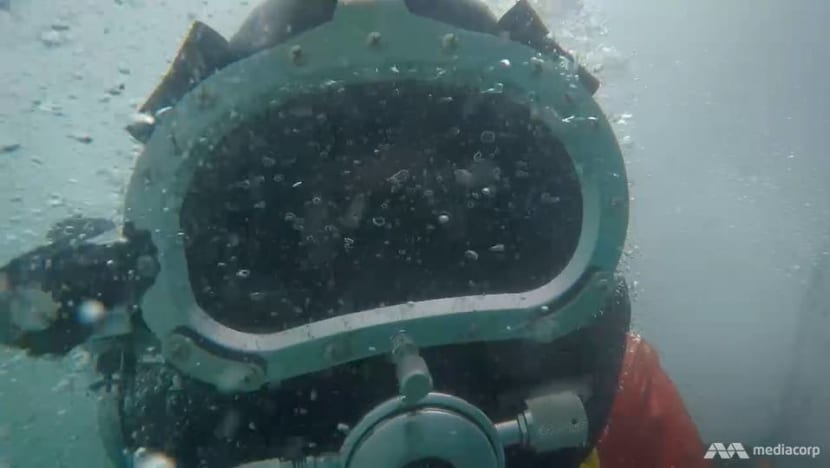For a pay packet, they risk drowning, crocodile attacks and being hit by ships
They are in one of the world’s most dangerous occupations, but these divers want to do what they love and go to sea, as On The Red Dot discovers.
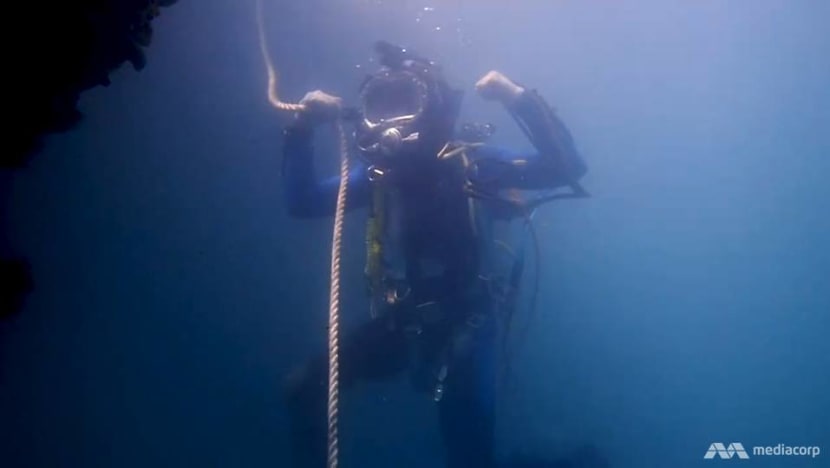
Underwater currents, strong winds and even heavy rain add uncertainty to the jobs commercial divers do.
SINGAPORE: Whenever Mr Terrence Lee heads off for work, his family, especially his mother, worries and prays for his safety. And for good reason too.
“Every time we’re in the sea, we fight with many uncertain elements, such as underwater currents, strong winds and even heavy rain,” said the commercial diver, who does anything from underwater inspections to welding to salvage operations.
Then there are marine creatures like jellyfish and crocodiles, as well as poor visibility conditions at times.
There have been at least six commercial diving-related deaths in Singapore since 2010, according to media reports.
READ: 27-year-old diver dies after accident in waters off Pulau Sebarok
Mr Lee himself landed up in hospital once, after he fainted as he surfaced. Yet despite the dangers and demands, it is a job he loves.

The risky work of commercial divers like him is highlighted in a four-part series on the programme On The Red Dot. (Watch the episode here.)
HE FELT A CONNECTION
Singapore has about 200 inshore commercial divers, who are certified to dive in Singapore’s waters.
To work as a diver, one must be at least 18, possess a commercial diving “Fit to Dive” medical certificate and a certificate of training in commercial diving, according to the Commercial Diving Association (Singapore) website.

Mr Lee, 36, was a Singapore Armed Forces regular for 10 years before he was introduced to the world of diving by his uncle, a scuba diving instructor.
Recounting his first dive, he said: “The feeling was like, wow. I felt very connected, very peaceful … It was a very new environment for me: The fish swimming, the depth of the sea, the corals.”
That was when he knew this was for him. But he did not make an immediate career switch owing to the risks involved and the fact that he had two children aged two and one.
“I had to (decide), if I have to give up everything, whether I could sustain and provide enough for the family. It was a little bit of a struggle,” he said.
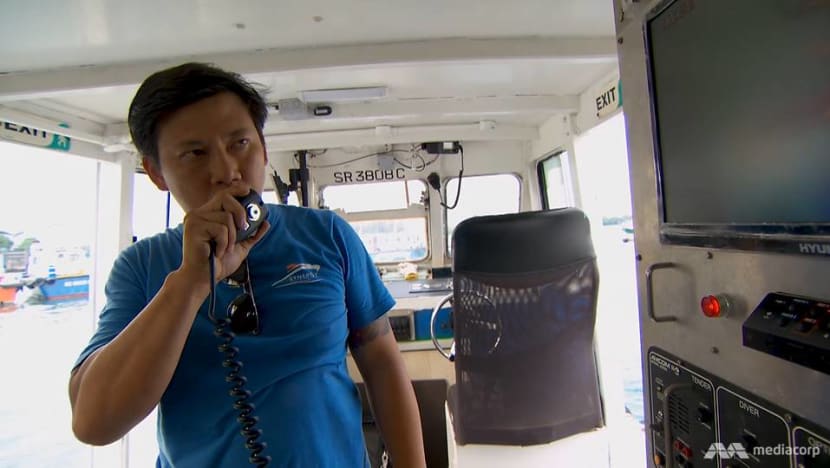
Finally, two years later, he quit his job to focus on commercial diving.
“Some of my friends might have thought that I was out of my mind, at such a late age, to transition to a new career, to do something people would avoid,” he added.
His job entails him being a jack-of-all-trades: He maintains and repairs vessels, and even does construction work. “I also do underwater cleaning of vessels (and) polishing of vessel propellers,” he cited.
It might seem easy … but to conduct the operation underwater is more complicated.
Commercial divers also maintain the navigational buoys for vessels to manoeuvre safely into Singapore’s ports.
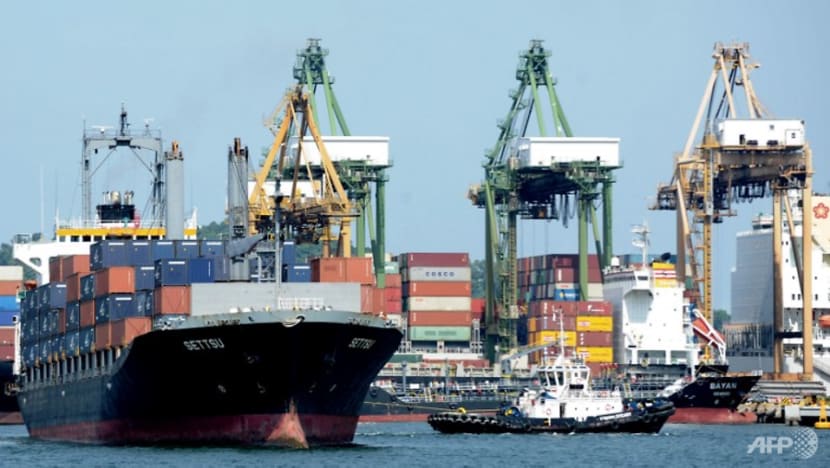
“Our line of work is invisible to the public. They don’t see our existence, and most people don’t really understand what we do,” said Mr Lee. “They imagine that every day, we’re swimming in beautiful water, seeing beautiful marine creatures.”
HELPLESSLY ADRIFT
When in the water, he must be mindful of the hazards around, including passing vessels, and be in good physical and mental condition.
Last May, commercial diver Jake Seet went missing while conducting underwater operations for a vessel in the Western Anchorage, near Sentosa. His body was found two days later, on May 7.
READ: Body of missing diver Jake Seet found in sea off Sentosa
READ: 'Just jump': In commercial diving industry, claims of risky practices surface
In June, 27-year-old Mohamed Firdaus died after he was struck by a concrete pile while working on a project in the waters off Pulau Sebarok.
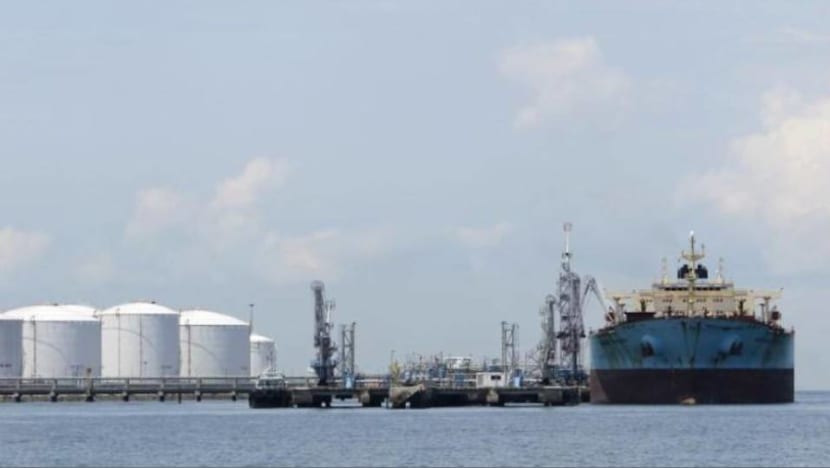
Mr Mohd Ismail Sulong was more fortunate. In November, he became entangled in a fishing net while he was working near Pulau Tekong, and because of the currents, he drifted for more than 20km.
The waters were choppy, recalled the 52-year-old, and he was fearful that a vessel would hit him. By the time he was picked up in Malaysian waters, he had swallowed too much water.
READ: Singaporean diver who drifted off course rescued by Malaysian authorities
He had to undergo an operation once he was back in Singapore, and until he is cleared for diving, he can do only deck work.

Mr Lee, who bumped into Mr Ismail during a visit to a clinic for his annual check-up, pointed out: “No matter how simple (the job), we need to expect the unexpected.
In this diving industry, most of the accidents occur when people don’t adhere to whatever safety (procedures) are in place, due to overconfidence or … taking shortcuts.
For commercial divers, there is a code of practice set by the authorities, which diving operators must adhere to, and it includes requirements for equipment use and certifications to attain.
Safety, said Mr Lee, is his main priority, and he knows there is little margin for error.
“When we’re facing a situation (underwater), if certain safety procedures aren’t followed, definitely there’s no second chance,” he said. “There’s no chance for … a retake.”
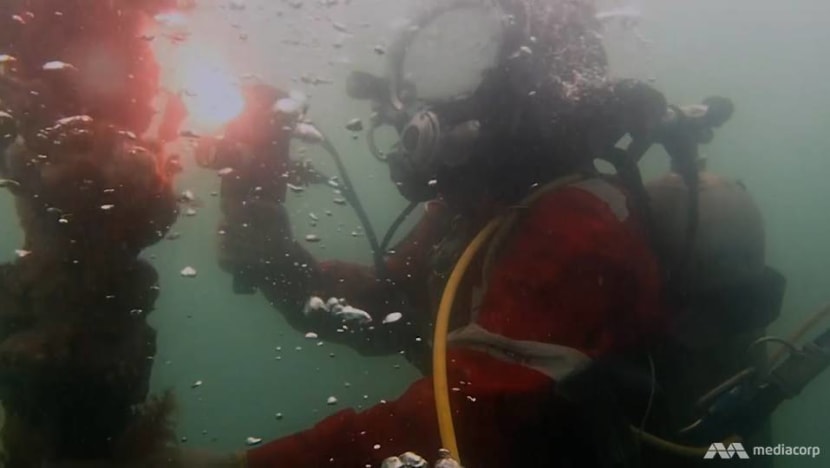
FAMILY SUPPORT IS IMPORTANT
Apart from the dangers, his hours are unpredictable. “We have to get to work at odd hours. Sometimes it can be 2am,” he said. “We have to be very flexible.”
So family support is important to this father of four; they “have to understand” what his job entails.
His mother, Madam Josephine Chang, still struggles to come to terms with what he does. Every time Mr Lee, a commercial diver for eight years, leaves for work, she questions him about his operation details and what time he would end.
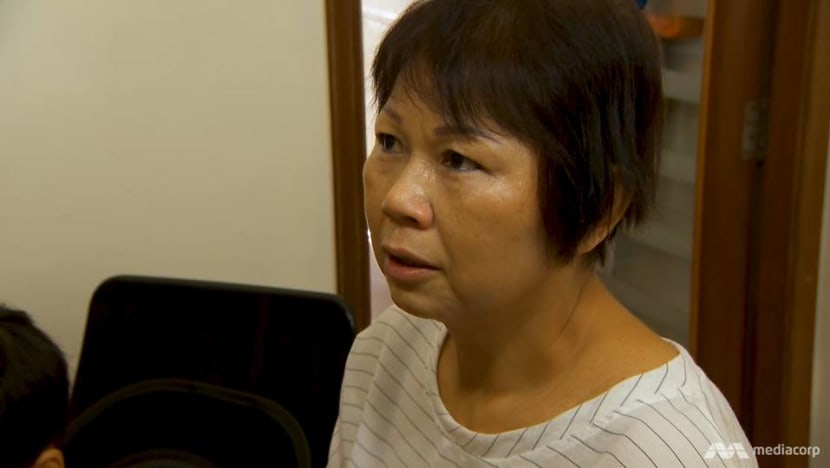
“I pray very hard for him. The children also pray very hard,” she said. “He can be at sea for maybe a couple of days and not be reachable … We (can) totally lose track of him.
Many a time, (we) just hope that there’s no bad news.
Tearing as she talked about the time her son was hospitalised, she said: “It was quite scary.”
Despite her unease over his vocation, she acknowledged his right to make his own choices.
“If they feel very happy … with what they wanted to do, I’d have no regrets for letting my children choose their own path. Even (if something) negative happens, I think that we take it (as) fate,” she said.
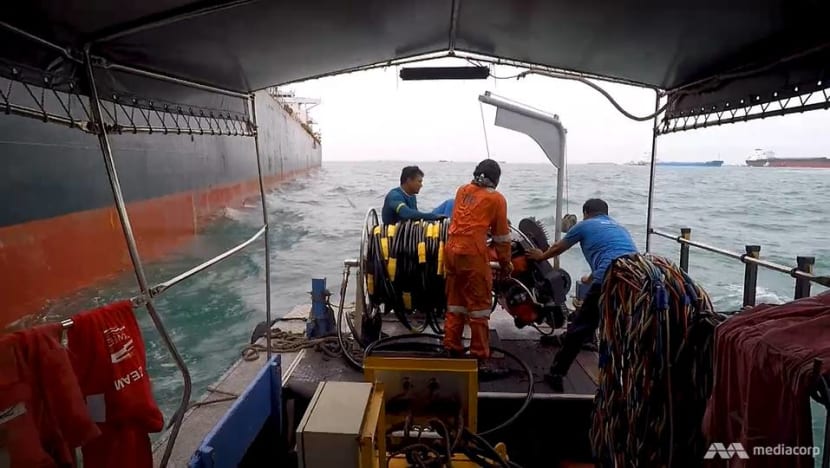
If given a choice again, Mr Lee would still be in this profession. “Divers are a unique breed of human beings,” he said. “Some even have nearly encountered death before, but they’re still … looking (forward) to the sea every day.
“We aren’t looking for any fame or recognition in this line … We’re just looking to go to work safely and to return to our families.”
Watch this episode here. On The Red Dot airs on Mediacorp Channel 5 every Friday at 9.30pm.
